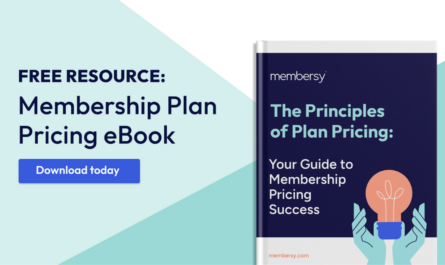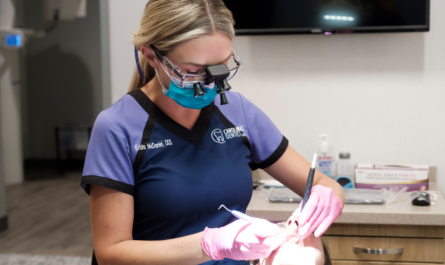Best practices for creating alliances, and new owner buy-in, for DSOs.
Tarek Aly has always taken a glass half full perspective to things.
“Life’s too short not to enjoy it,” said Aly, BDS, MBA – Co-founder, Chief Operating Officer, OrthoDent. “With straight roads, you don’t need skillful drivers. You really need those obstacles to grow and learn. So whatever life throws at you, use that to jump to the next level.”
In dentistry, that positivity is more than justified by market trends.
“There is a huge demand for dentistry in general,” he said when describing the keys to OrthoDent building itself into a 19 dental group organization in Texas. “We saw a huge demand in the pediatric dentistry and orthodontics world in Texas. Everywhere you go, there was a ton of demand. We noticed this hole, though. What if we provide quality care at an affordable price to residents in rural towns in Texas? Let’s see what happens.”
Magic is what happened next, said Aly. “We grew very fast.”
In a recent DEO Case Study, Jake Puhl, partner of CEO of The Dentist Entrepreneur Organization, spoke with Aly about that growth and the keys to building a 19-location dental group. The following were some key takeaways from the case study intensive.
What kind of role team plays in one’s development
“We’d be nothing without our team. We have the most wonderful team, hand selected. We have team members who’ve worked in multiple groups. We have team members that grew from the bottom up. We have team members that started with us and now they are amazing. They’re superstars. The team is everything. If you think about the train, we’re all in the train right now going to a destination and the team is the engine. Can you imagine an engine that is not being taken care of? If you neglect the team, if you fail to recognize their talent and address their needs and utilize their talent, then of course your engine is going to leak and you’ll end up stopping somewhere in the desert where you’re stuck.”
On approaching other dentists for alliances
“Think of the train analogy again. We’re all on a train. All of us enter at a specific spot and we exit at a specific spot, but some of us have the same exact exit. We may go to that same destination. So alliance means that I hold hands with those who have a very similar destination. We’re trying to make the train as efficient and as productive as possible.
[With alliances] I’ve picked dentists who are very similar, like-minded individuals – entrepreneurs who know that number one priority is patient care and quality of care. Then, if they’re going with me to the same destination, we can have an alliance. But an alliance doesn’t just necessarily mean that they could be going to the same destination. Even if they’re there for the next three or four spaces, they’re still with us.
So an alliance here is how we pick those dentists. Anyone who is willing to grow, who has that growth mentality, entrepreneurship, and knows exactly what they want is a potential alliance candidate. What we typically do is we say, ‘What is it that you need in the next few years? What’s your destination? What does the roadmap look like?’ If it’s very similar and coherent, we form an alliance. That’s how we all grow.”
Best practices for generating successful alliance candidates
“We don’t necessarily go and seek alliance candidates. I feel that they typically come to you when they see your vision, and they see what you’re trying to do.
If you think about COVID, when that happened we were all wondering what would happen to regulation. So there was a compliance alliance. Then, an HR alliance formed when people began wondering about layoffs, furloughs, etc.
So recently, dentists have become aware that, first of all, the clinic is a business that needs to be profitable as much as it needs to be super compliant and high quality. Second, it needs to grow. We need to care about the team, we need to have succession planning, and because it’s a business, the clinic needs to have profit as well. We realize that business is a part of what we do.
We’re all in the same boat; we just have little differences here and there. Everyone’s a potential alliance.”
New partner buy-in
“[New partner buy-in or associate buy-in] really depends on the size of the DSO. Size does matter with this particular one. There’s a reason why someone wants to buy-in to the DSO. They see the vision. They know where to go. Why would you want to bet on something that is moving? You want to bet on something that is winning.
So they worked as an associate for a while. They were either focusing on finances – they wanted to pay off debt – or they were focused on learning a little bit about the business, or wanting to do more critical growth before starting their own. Once that’s done, they have a need. My immediate needs are satisfied, either I’ve made money or paid off debt, and now I want to grow. I want to catch momentum. Now it’s time to build my own instead of working for someone else.
So, we have to first congratulate them for taking that step. A lot of us forget that part. ‘Thank you very much for thinking about this.’ That means you trust them. If you believe in us, you’re betting on a winning horse and you think we are the winning horse. So that’s the first thing.
The second step is, what is your mission? What do you really want to do? What’s your vision? Write it down. What do you need? And then see if that matches in subsets and if it goes to the core. Now let’s talk semantics. Let’s talk the structure of how that works. There are multiple ways of doing it; there’s no perfect way of doing it. And like I said, size does matter. So if you’re a DSO with three units, or four units or five, the structure may be significantly different than if you’re a DSO with 50 units.
At the end, they all have to be aligned in that alliance, in order to catch the momentum together and have the similar end goal.” To watch the full DEO Case Study, visit the DEO – Dentist Entrepreneur Organiz





